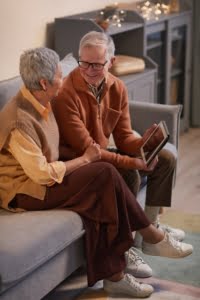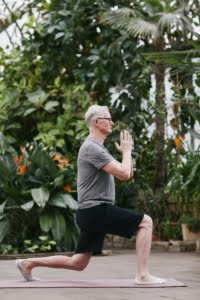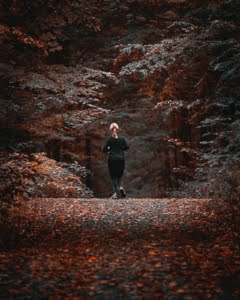 Unless your job places you in danger every day, most of our lives tend to be ho-hum and quite placid. Yes, we’ll encounter the odd scare now and then, but nothing truly life-threatening. Our bodies have survival mechanisms built into them to help us in those dangerous encounters and one of these mechanisms is the fight or flight response.
Unless your job places you in danger every day, most of our lives tend to be ho-hum and quite placid. Yes, we’ll encounter the odd scare now and then, but nothing truly life-threatening. Our bodies have survival mechanisms built into them to help us in those dangerous encounters and one of these mechanisms is the fight or flight response.
As the name indicates, the fight or flight mechanism triggers physiological responses in the body that allow you to either run away or stand and fight your way through to survival. Your body releases adrenalin and other hormones that enter your system and cause changes such as increased heart rate and muscle tension. These enhance your capacity to fight or flee a situation as they provide oxygenated blood to your muscles and sharpen your focus.
The problem with this well-honed survival mechanism comes when it is unhelpfully triggered in a situation that isn’t life-or-death, and it can also be harmful to your health if your body remains in that state of arousal for longer than it needs. In such cases, seeking support through San Diego Christian Counseling can provide valuable tools for managing stress and restoring balance.
Those physiological processes triggered by the amygdala, which is the hub of our emotions, cause strain on the body. Remaining in this state of anxiety creates many unwanted physical and mental side effects. This is why it’s important to know how to take your body and mind out of a state of high alert.
Effective relaxation techniques for anxiety.
Being able to relax and take yourself from a state of anxiety toward calm can help you in a variety of ways. For one thing, you’ll be able to reap the health benefits of not straining your body by remaining anxious. Being able to calm yourself also means that you open your options for situations you can handle.
If you’re anxious about giving a speech or engaging in a debate, for example, being able to calm down will allow you to go through with it. The ability to calm down will help you express yourself more clearly than you would if you were feeling anxious.
There are several effective strategies and relaxation techniques for anxiety, including the following:
Deep breathing and relaxing by breathing.
Anxiety affects your body by increasing your heart rate as well as making your breathing faster and shallower as a result. This has benefits in the moment when you’re trying to evade or confront danger, but otherwise, it can make you feel a bit lightheaded or dizzy. You can turn this around and relax your body and mind by bringing your breathing under control.
Find a comfortable and quiet place to sit down. Begin by taking slow and regular breaths in through your nose, and then breathing out slowly through your mouth. You can breathe out slowly through your nose if that feels more comfortable for you.
To guide you in the process, you can place one hand on your chest and the other on your stomach. The hand on your chest should move less than the one on your stomach when you breathe in deeply, and you can repeat the process of slow inhalations and exhalations at least ten times. You’ll begin to feel your anxiety lessen as you do this. Over time, you can do this anywhere to help you calm down.
 Using counting to relax.
Using counting to relax.
Parents often tell their kids to count slowly to calm themselves down. This advice works just as well for adults and can be a helpful strategy to relax and reduce stress as it gives you something other than your anxiety to focus on.
When you’re feeling anxious, you can either go and find a quiet spot or simply close your eyes where you are and slowly count to ten. You can count up to twenty, or you can choose to repeat counting up to ten until your anxiety subsides.
You can combine counting to ten with slowing your breathing down, with 1 as a count for inhaling and two as a count for exhaling. You can use this method anywhere you find yourself, making it one of the more flexible relaxation techniques for anxiety.
Progressive muscle relaxation.
Anxiety can make you tense, and progressive muscle relaxation (PMR) can help you relax those tense muscles. You can find a quiet and comfortable spot to either lie or sit down, and then find a spot in the distance to focus on.
Alternatively, you can just close your eyes as you begin to clench your toes and then release them after a few seconds. From your toes, you can move up to your calves, thighs, stomach, hands, arms, and shoulders with the same clenching and relaxing movements for your muscles.
There may be some muscles that are noticeably tense or tired, and you can repeat this process of clenching and relaxing until you feel yourself lose that tension or fatigue. When you feel ready to, take a beat to relax, and then you can slowly begin to move and stand.
Mindfulness.
 Anxiety causes your mind to race without being able to focus well. What mindfulness does is help you focus on the present moment and surroundings. This will help calm your thoughts and reduce your anxiety.
Anxiety causes your mind to race without being able to focus well. What mindfulness does is help you focus on the present moment and surroundings. This will help calm your thoughts and reduce your anxiety.
Right where you are, you can take a deep breath and pay attention to things like your body posture, the scents around you, the clouds in the sky, or the floor and any patterns you see or feel.
You can practice mindfulness right where you are, or you can add a twist and get some gentle exercise thrown into the mix if you decide to take a walk in a park, nature reserve, or garden. If you decide to add some greenery to your mindfulness, as you walk around you can pay attention to things such as whether you’re walking on grass or bare earth, the colors you see, the sounds around you, and so on.
Draw or color an intricate pattern.
Creativity can help you calm down by focusing your attention elsewhere. You can create a pattern on a blank piece of paper, whether it’s made up of circles, squares, or abstract lines and shapes. When you’ve filled your page the way you want to, you can begin coloring it in as you desire.
You can make your design and coloring as simple or intricate as you please, with the aim being to draw your focus and energy away from your worries toward your art project. If you’re feeling a little uninspired, there are many coloring books for adults that you can have handy for those times anxiety strikes.
Visualization.
You can use images to focus your mind and relax. The way to do this is to fix an image in your mind. The image could be of a real place, but it can also be an imagined place that you’ve populated with detail. This image that you have in your mind is of a place that is ideal to find rest and calm; in other words, it’s your happy place that you’d be eager to go to.
As you visualize this place, engage all of your senses to make it as real as possible. Imagine what you might see, hear, smell, touch, and taste while you’re there. Paying attention to your breathing, close your eyes and take a slow, regular breath in through your nose. Take in all of the details of your happy place as you slowly breathe out through your mouth. You can repeat this breathing and visualizing action for 10-20 minutes until you feel relaxed and calm.
Interrupt your anxious thoughts.
 Anxiety is often fueled by certain patterns of thought. When your boss sends you a message saying they want to talk to you, that can unleash a variety of thoughts, including anxious thoughts that something is wrong, that you’re probably in trouble for something, or that they are thinking of letting you go. Those thoughts can begin spiraling and the anxiety feeds upon itself as you become more and more anxious as the meeting time approaches.
Anxiety is often fueled by certain patterns of thought. When your boss sends you a message saying they want to talk to you, that can unleash a variety of thoughts, including anxious thoughts that something is wrong, that you’re probably in trouble for something, or that they are thinking of letting you go. Those thoughts can begin spiraling and the anxiety feeds upon itself as you become more and more anxious as the meeting time approaches.
Anxiety can make us think and believe harmful and untrue things. To counter this, being able to disrupt these thoughts is a helpful strategy so that you think clearly and react appropriately to your thoughts.
To break the cycle of anxious thinking and relax, you can interrupt that thinking by singing a little ditty about your anxieties, turning to some uplifting music, or choosing to focus on positive thoughts rather than on the anxiety.
Having told them how to deal with any thoughts of anxiety, Paul tells the Philippians, “Finally, brothers and sisters, whatever is true, whatever is noble, whatever is right, whatever is pure, whatever is lovely, whatever is admirable—if anything is excellent or praiseworthy—think about such things.” (Philippians 4: 8, NIV) One’s mind and heart will profit if the focus is on ‘such things’ than on the murky unknowns that one’s anxiety urges them to dwell on.
Help for dealing with anxiety.
Whichever relaxation techniques for anxiety you end up gravitating toward to help you relax, will result in positive outcomes for your mental, emotional, and physical health. These tools and others are available to help you deal effectively with anxiety. Other tools that you can make use of include lifestyle changes such as reducing the intake of caffeine and alcohol as well as taking up some form of regular exercise.
If you’re looking for additional support beyond these relaxation techniques for anxiety, a mental health professional such as a counselor can help you identify what triggers and exacerbates your anxiety, and they can be a sounding board to hear your concerns. You can find out more about counseling for anxiety at San Diego Christian Counseling by reaching out to a counselor and making an appointment. Contact our office today to get started.
Photos:
“Woman on a Swing”, Courtesy of Artem Beliaikin, Unsplash.com, CC0 License; “Happy Couple”, Courtesy of Marcus Aurelius, Pexels.com, CC0 License; “Yoga”, Courtesy of Marcus Aurelius, Pexels.com, CC0 License; “Jogger”, Courtesy of Marcel Köhler, Pexels.com, CC0 License;


